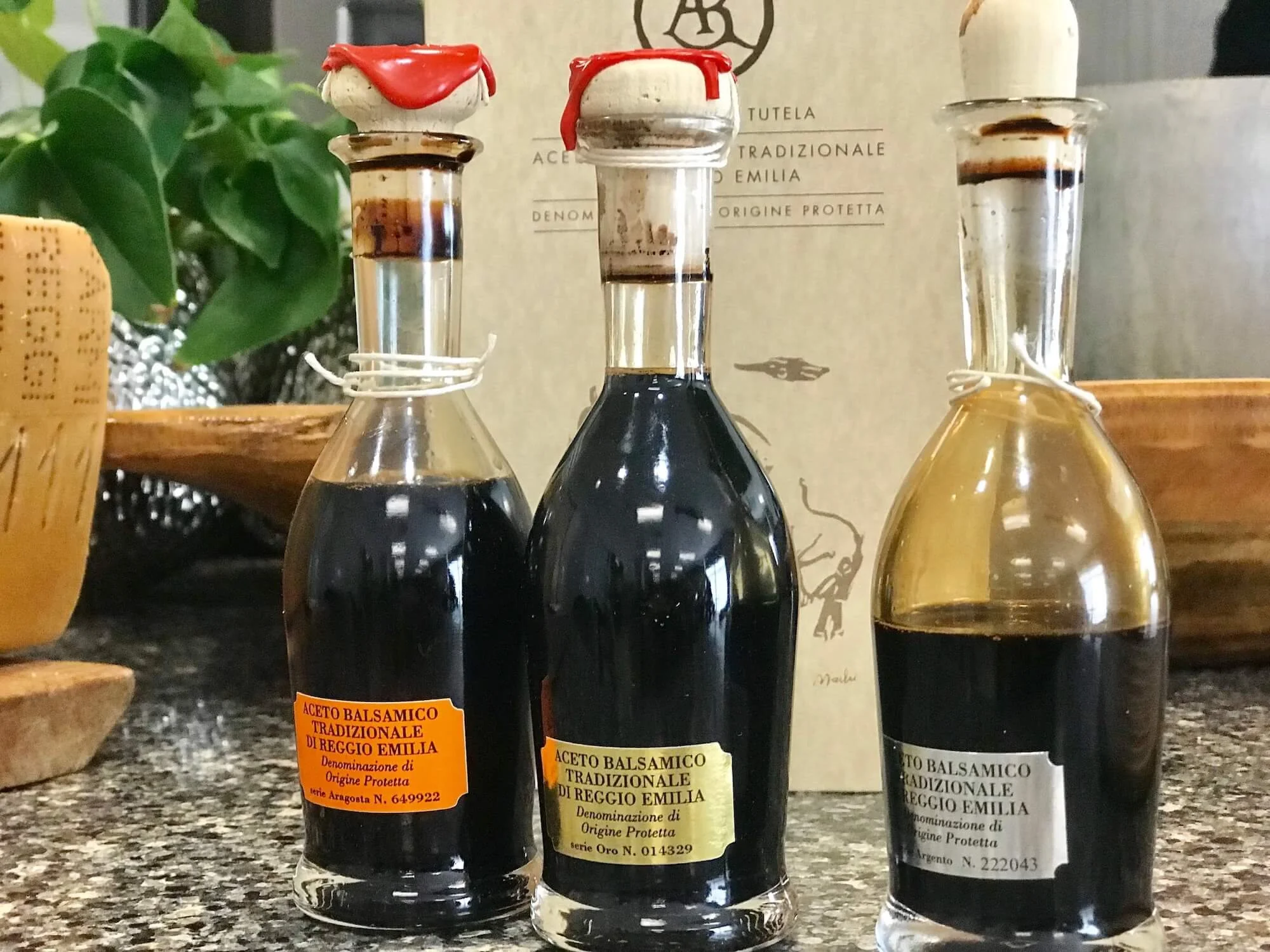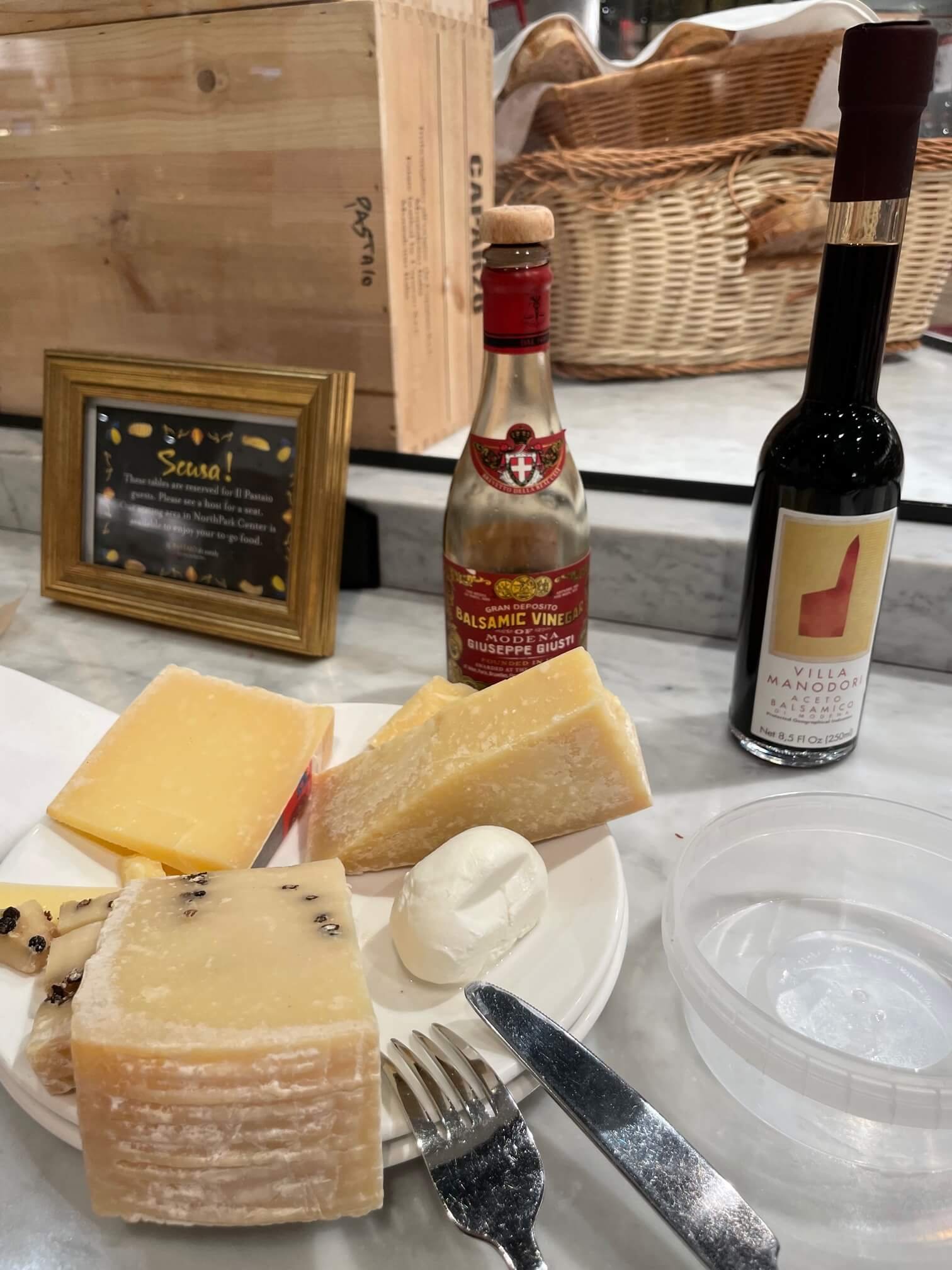Why Italians Pair Cheese with Balsamic Vinegar & Why You Should Too
Emilia Romagna is heaven on earth for foodies. Located in Central Italy and bordering the regions of Tuscany in the South and Veneto in the North, fertile farmland stretches from the Adriatic Sea to the west. It is here that some of Italy’s most prized foods are produced––Parmigiano Reggiano, prosciutto, and balsamic vinegar. Is it any wonder that they complement one another?
According to the Consorzio Balsamico, the production of balsamic vinegar dates back to the 11th century, but it wasn’t until the 1800s that it began to be appreciated outside of Italy. And it wasn’t commercially imported into the United States until 1978. Traditionally it was used as both a medicine, sweetener and condiment, and served with meat, fish and cheese. Today balsamic vinegar isn’t thought of as medicine, but it is incorporated in a wide variety of both traditional and modern dishes.
Traditional Balsamic Vinegar of Reggio Emilia
Types of Balsamic Vinegar
Balsamic vinegar is made under strict guidelines in the region of Modena. The traditional balsamic vinegar of Modena PDO is a thick, dark syrup that has been aged at least 12 years. As it ages the flavors become more nuanced, and rich. Use it with aged cheeses and very aromatic cheeses like blue cheese, for example. The balanced acidity and sweetness of the vinegar will offset the ripe flavors of the cheese. Quality and price reflect the age.
Balsamic Vinegar of Modena IGP wine vinegar is blended with must and need only be aged 60 days. If it is aged a minimum of three years or more, the designation Invecchiato can be added to the label. The quality of raw materials and blending are key to the quality.
Michele Casadei Massari, the US chef and brand ambassador for the Consorzio Parmigiano Reggiano, describes the flavors of balsamic vinegar as a rich sweetness with notes of fig, molasses, cherry, chocolate, and prune; mellow tartness rather than a strong acidity.
Why Balsamic & Cheese?
The simple explanation why balsamic vinegar pairs with cheese, is the balance of acidity and richness. Both the cheese and vinegar cause the mouth to produce more saliva which stimulates hunger and the desire to continue eating. It also makes the cheese feel less heavy in the mouth due to the slight sweetness of the vinegar.
The more aged the cheese, the better it will pair with an aged balsamic vinegar. There are many good IGP vinegars aged three or more years that are less expensive than a PDO which is aged 12 years or more.
How to Pair Balsamic Vinegar & Cheese
The most traditional cheese to pair with balsamic vinegar is Parmigiano Reggiano, but other cheeses pair well with it too. Marco Forti, head of the Consorzio Tutela Pecorino Toscano DOP recommends a 12-year-old vinegar that will not overwhelm the sweet, clean taste of the Pecorino Toscano.
Other hard cheeses to try with balsamic include Pecorino Romana and Grana Padano. It also pairs well with softer cheeses such as gorgonzola. It can also serve as an accent in dishes with goat cheese, ricotta, robiola and mozzarella including burrata. A bit of balsamic vinegar with blue cheese stuffed figs, cheese flavored risotto, or with recipes from the Consorzio Balsamico such as Summer Vegetable Tartare with Yellow Cherry Tomatoes and Buffalo Mozzarella, Cannelloni stuffed with Ricotta, Spinach, Mushrooms and Pumpkin or Salad with Grapes, Gorgonzola, Pine Nuts and Balsamic.
When cooking with balsamic vinegar never use the aged PDO vinegar as the heat will destroy the delicate flavors. You can simply add it after by stirring it into a soup, risotto, sauce, or adding it on top or on the side of the dish. Use the younger IGP vinegar which can be reduced to make delicious glazes.



